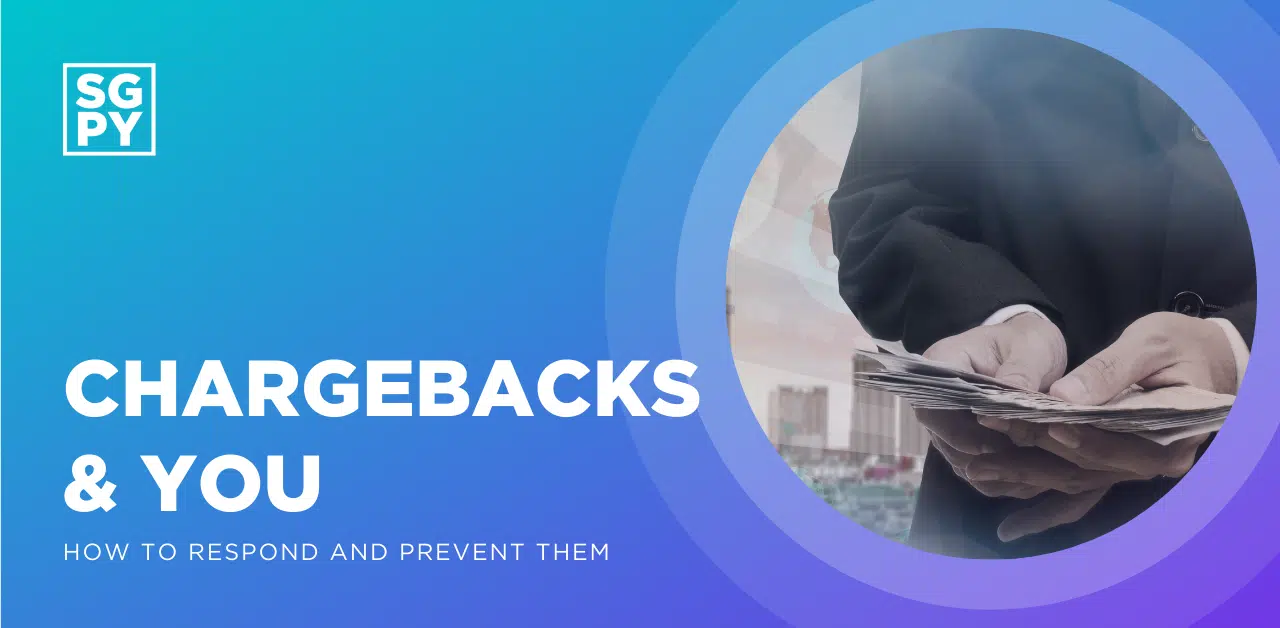Chargebacks & You

How to respond to chargebacks, and how to prevent them
A chargeback is when a cardholder disputes a charge with their bank in order to reverse the charge.
It’s a tool meant to give cardholder’s a last means of defense against rouge merchants who refused to refund the cardholder directly. However, for some merchants, that crucial step gets missed and results in what we call “friendly fraud.”
Friendly fraud is the not the only reason a chargeback can happen. Here are some other common reasons for chargeback:
- Product didn’t match the description
- Product didn’t meet the cardholder’s expectations
- Retailer shipped the wrong product
- Product never arrived
- Order was billed multiple times, or other clerical errors
- Purchase was made fraudulently
But merchants are not left without a defense of their own, they have the ability to dispute a chargeback and win their money back if the transaction was legitimate.
What to do when you receive a Chargeback Notification
When a cardholder initiates a chargeback, the merchant is notified that the funds have been drafted from their account. This money is held “in escrow” essentially, until the chargeback review process is complete. Depending on the amount of the chargeback, a merchant may decide to act or not act. While disputing a chargeback is often a good thing, sometimes the cost of fighting a chargeback may not outweigh the amount of the chargeback.
When the merchant receives a notification from the Risk Management team, it will ask for supporting documents, or evidence, to verify the legitimacy of the charge.
Evidence can include:
- Proof of shipping (usually in the form of a tracking number, shipping receipt etc.)
- Sales or transaction receipt
- Matching bill-to and ship-to addresses
- Proof of delivery (usually in the form of a delivery receipt from a shipping provider, a confirmation email etc.)
- Positive AVS response
- Any conversations with the customer, or any other evidence that the merchant fulfilled the transaction
Here is where things start to get a little tricky. Merchants only have the one opportunity to dispute the chargeback, so submitting as much as evidence as possible in the first instance is the best way to support the merchant’s claims. From here, the banks will decide if the reason the chargeback was initiated is supported by the evidence or not.
How to prevent some chargebacks in the first place
Let’s talk about a few ways merchants can protect themselves from potential chargebacks, which can be costly even if the merchant wins their chargeback case.
- Offer good customer support – Most of the reasons a chargeback happen is because the product did not meet the cardholder’s expectations on purchase. Providing good customer service prevents cardholder’s from having to go nuclear, and instead reach out to the merchant directly for support.
- For Card Present Environments, using an EMV (chip) terminal serves a dual role, protecting cardholders, and protecting merchants. This only applies both ways though, if merchants are using an EMV terminal to process payments. Payments taken via magnetic swipe leave the merchant liable for any damages to a cardholder. If your merchant does not use an EMV terminal, they are liable for almost every transaction they process in the event of chargebacks and data breaches. If your merchant needs a new EMV terminal, please reach out to ISOSupport@signapay.com.
- For Card Not Present environments, utilizing features like asking for a card security code or using the Address Verification System offer an extra layer of security to prevent card fraud from being used on you.
- Keep your records of sales and receipts for at least 1 year. This is not only good business practice, but in some rare cases, cardholders can chargeback a transaction from up to 1 year previous.
Recent blog posts
The latest industry news, interviews, technologies, and resources
SignaPay Celebrates Fourth Appearance on Inc. Magazine’s Inc. 5000 List
FOR IMMEDIATE RELEASE Dallas, TX, August 13, 2024 – SignaPay, a premier provider of innovative payment solutions, is thrilled to announce its inclusion in Inc. Magazine’s prestigious Inc. 5000 list …
Closing B2B Merchant Sales: A Guide for Success
Closing merchant service sales takes more than a great pitch—it requires strategy, persistence, and a value-driven approach. Business owners need trusted payment partners who offer transparent pricing, reliable technology, and strong support. To succeed, sales reps must understand their prospects’ needs, lead with value, build trust, and confidently address objections. Using social proof, creating urgency, and following up effectively can turn hesitant prospects into long-term customers. By refining your approach and positioning SignaPay’s solutions as the best choice, you can close more deals and grow your portfolio. Ready to level up your sales game? Let’s get started!
The Secret to Passive Income and Career Growth: Becoming an ISO Partner
As the payment processing landscape evolves, Independent Sales Organizations (ISOs) have become pivotal in bridging the gap between merchants and financial institutions. For entrepreneurs and professionals in the payment industry, …
Navigating the Quantum Highway: From Morning Commutes to Payment Security at SignaPay
By: David Leppek, CTO SignaPay January 7th, 2025 As I navigate the intricate highways of Dallas, my GPS guides me effortlessly to SignaPay’s office in Irving, Texas. Recently appointed as …